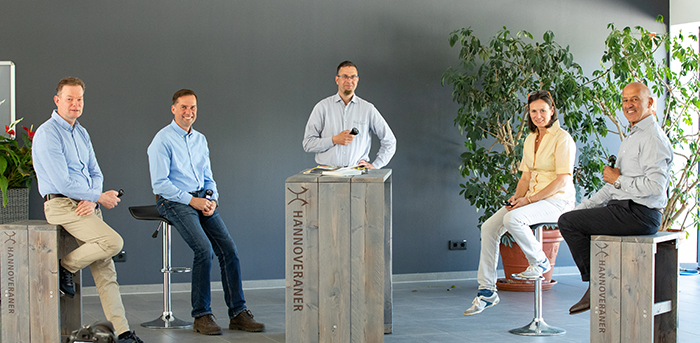
(Photo: Fellner)
By Britta Zungel
This article originally appeared in Der Hannoveraner, July 2021, and is re-produced with permission
On Hannoveraner TV, Jonny Hilberath met for a relaxed round of talks with Matthias Klatt, a member of the Dressage Presidium, Stefan Blanken and Anja Rietbrock from the Dressage Committee and Ulrich Hahne, Hanoverian Breeding Director. The rider, trainer and co-national trainer for Germany is not only concerned with the sport; breeding is also close to his heart.
What actually makes a good Grand Prix horse? A few years ago, a guideline on the subject of breeding Grand Prix horses was compiled:
For Grand Prix, a horse with a good basic quality of the gaits is needed. For the ability to collect, especially the carrying capacity in addition to the basic mobility of the horse is important. The temperament also significantly influences the suitability for a Grand Prix horse. It must be sensitive and able to develop a positive attitude towards the required tasks. In addition, the health of the limbs, in particular, is of great importance. These are all terms that must be met.
Good basic quality of the gaits – what does that actually mean?
Jonny Hilberath and the Hanoverian stallion, Wenckstern (Weltmeyer/Western Star), Grand Prix competitors
Matthias Klatt: “Movement does not necessarily have to be spectacular, but rhythmical and powerful. The hind legs, and the back, must be strong and powerful. You can already see that in a young horse, even in a foal.”
Jonny Hilberath: “A horse should be designed with a lot of freedom in the shoulder. The conformation must allow the horse’s front legs to move forward and upward in the canter, walk and trot; the hind legs must be able to step under the horse’s centre of gravity. Spectacular movement only does not mean a quality trot and canter; the rhythm and the swinging are also important. Good coordination of the limbs develops the momentum. This also applies to the walk. There is no successful dressage horse today, in which all three basic gaits are not of equally good quality.”
Dorothee Schneider and Showtime FRH winning at the Bundeschampionate.
The combination were part of the Gold Medal Team at the Tokyo Games
Anja Rietbrock: “Horses that are balanced at a young age, have a harmonious appearance, and work over the back, and will later be able to execute difficult test movements .”
Jonny Hilberath: “It’s in the nature of things: Everything that comes naturally is easier for the horse. Everything that the rider has to support or generate is much more difficult for the horse. Which means the sustainability is often limited.”
Stefan Blanken: “Especially at foal shows, you don’t need to watch the spectacular ’rompers’ for two rounds. Foals should come into the arena calmly, evenly and rhythmically and trot through the corner. You can judge the quality much better, if the foals step nicely with the hind legs under the centre of gravity and move out of the shoulder exhibiting relaxed first steps.”
Jonny Hilberath: “That is what ultimately counts in the arena. The rider promotes and optimizes through training the basic pre-disposition of a horse. Hence the basic quality has to be right. Everything that has been ‘created’ will eventually catch up with the rider.”
Ulrich Hahne: “We want to see the natural suppleness in the presentation. In the early years, the trot is often in the foreground. But the canter has a much higher importance in the Grand Prix than in the lower levels.”
Jonny Hilberath: “The foal will show its natural talent to carry itself and move in balance from the start. The trot often balances itself through going forward and this is of great significance, Later on, we look for a young horse that is able to canter on the lunge on a curved line in self carriage. With respect to percentage points in a test, it is feasible to say that the canter is the most important gait in the Grand Prix; that’s where you score the most points. All canter movements have a coefficient of two. Foals and young horses can naturally jump a long way under their centre of gravity, carrying their front end ‘in front of them’ using their neck for balancing. This later on is important for the carrying of the body, and collection.”
Ulrich Hahne: The next point of the guidelines is the carrying capacity. How do you recognize it?
Jonny Hilberath: ”You can’t recognize the carrying capacity of a three-year-old. He does not have the strength yet. But if a horse is constructed in such a favourable way, it can balance itself. This can give an impression, that with the rider’s influence, the horse will be capable of carrying itself. This is created. No matter how hard the rider tries, it will not work though if the horse has no natural talent. This does not mean that such a horse cannot be trained. But it will never get the quality to go right to the top, and last for a long time. Everything you have to train into the horse against its natural ability has its consequences.”
Desperados as a young horse – canters through his whole body
Matthias Klatt: ”The canter is very important. In it you see a certain quality for developing carrying capacity. It is a good basis to build upon, if a young horse canters well, and balances himself and uses his neck and his whole body.”
Counter canter shows the horse can carry itself..
Jonny Hilberath: ”This most likely shows in the counter canter. That is a core part. When you start to train counter canter with five-year-olds, you quickly find out whether it only works with ’full throttle’ or whether the horse is able to carry itself and maintain the counter canter through a corner or on the circle line. There are horses that have a certain amount of self-confidence, which makes things much easier. It is very important that the horse can carry its topline. It depends on whether the horse takes his neck up to balance or tends to go downhill. You can already see this natural behaviour in young horses in the pasture.”
Ulrich Hahne: Watching a young horse allows us to make certain assumptions. From a breeder’s point of view, a five-year-old is no longer a very young horse. Especially in dressage horse breeding, young stallions are often used for breeding. What should the breeder look for?
Jonny Hilberath: ”Riders know how much effort is needed to ride a horse into a correct self-carriage, when it does not offer this by nature. It becomes a problem for the continuing training. The end result of training movements that require so much physical effort are often not what you hoped for.”
Matthias Klatt: ”Horses with good conformation, well-set necks and well-defined withers, strong backs and sloping croups find it easier to accept the rider’s aids and achieve supplness and relaxedness. As a breeder, you have to make sure that the foundation is really stable.”
Ulrich Hahne: It is often said that horses that are successful at the Grand Prix-level are more difficult at the beginning of their training. What does the term ’suitably sensitive’ mean?
Matthias Klatt: ”Horses should have a certain sensitivity for the recreational rider as well as for the Grand Prix-rider. The temperament must always be pleasant, and the horse must be willing to perform and accept a rider. It can be a bit more difficult at times, but it must not want to get rid of the rider.”
Jonny Hilberath: ”Intelligence in horses can be tricky. It is defined and can be interpreted very differently. Attentiveness is very important. There are horses that are sensitive or sometimes hot, but they keep a responsiveness to the rider. That is the most important thing. Horses that are very talented in terms of gaits, but can become unresponsive to the aids, and become unmanageable, are difficult. In my experience these horses remain difficult. A lot of effort and work can improve the situation, but it takes a lot of time. There are currently many horses in the German sport that are ‘hot’ and simply very awake. But they keep responsiveness to the rider. That is the big difference. The question is always whether the horses get ’hot’ under stress or whether they have a lot of energy and joy of movement. Energy and the joy of movement are very positive and should be rated highly.”
Stefan Blanken: ”As a rider you are happy when the horses keep responsiveness . Horses need to have the energy to do the piaffe and passage later on.”
Jonny Hilberath: ”The amateur horse should also be sensitive, because a sensitive horse with a certain calmness is much easier to ride even for a not-so-experienced rider. That goes both ways. There are not only ‘over-motorized’, complicated and jumpy horses, but also well-behaved and lethargic ones where riding is not so much fun anymore.”
Anja Rietbrock: “Every rider would rather have a rideable horse with a good character, with which he can make more out of less movement through education and training, than a very difficult horse, with which you can hardly get around the arena. That doesn’t help anyone. Of course, you need spirit and mind to be able to compete at the very top. Rideability is a huge issue.”
Jonny Hilberath: “Many horses have a supposedly good and promising start. After a while it becomes clear that some horses are sensitive, but don’t learn anything, and others change and learn. They learn to trust and listen to their riders. Riding is also about interacting, about communication. Horses that don’t listen to their riders because of an extreme flight instinct and strong insecurity issues, are a big challenge.”
Ulrich Hahne: These temperamental characteristics are difficult to read from breeding values. At this point, breeders have to analyze their mare line, look at what has become of the horses that presented themselves well as foals. A lot can be seen just by observing the daily behaviour.”
Matthias Klatt: “You have to know your breeding exactly. Which combinations fit well, which horses have developed a good attitude towards humans.”
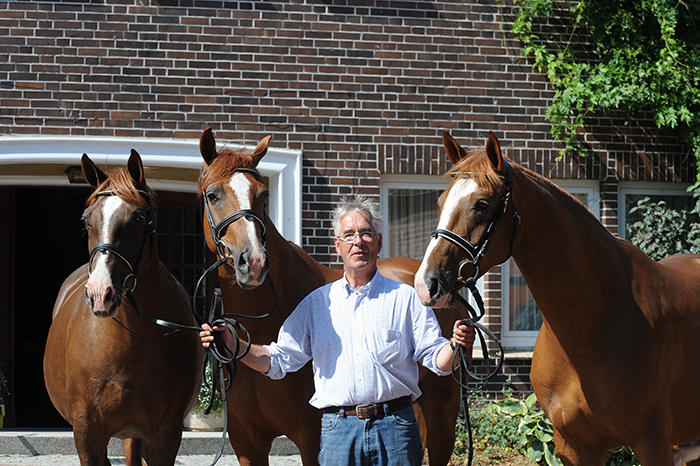
Successful Hanoverian breeder, Hans-Heinrich Brüning – you have to know your mares…
Jonny Hilberath: “It’s the job of breeders to not just breed, but try to find the right stallion for a mare very specifically, and with a lot of thought. The stallions also have to be observed. Admittedly this is difficult with young stallions, especially with three-year-olds after licensing. You can read up, or see a lot of things already, but it is only when the stallions are competing that you can tell if a horse is a “performer’, if he has presence. Watching horses in the warm-up ring is also very important. Often the relation to the sport is a problem for the breeder. At breaking-in or at the mare test, the temperament is not weighted well enough. When selecting a line, a much more targeted approach must be taken. When we talk about sport, the temperament is half the battle.”
Stefan Blanken: “Breeders simply have to know their mare line. If a sire and grandsire have already been used with this line, you know how to select, since you know what might be a good fit.”
Ulrich Hahne: “Someone who is new to breeding has a lot of work ahead of him. He has to do research and have conversations to get a certain feeling for the line.”
Times, and demands, have changed, Fürstenball,, and Grande who died in 1989
Fürstenball is one of three stallions who top the 2022 Hanoverian dressage stallions topliste on a value of 141(the other two are Benecio and Don Frederic), but he is way in the lead on the topliste for type, with a value of 165 – the next highest is For Romance I with a value of 151
Stefan Blanken: “The breeding community has changed a lot. Farm-based breeding has become less and less. Many start breeding, when the mare, they have ridden, gets older. For them it is difficult to find the right stallion. They know their own mare very well, but they don’t know, what she will pass on to her offspring.”
Ulrich Hahne: Why is the soundness of the limbs – the stability of the foundation so important?
Jonny Hilberath: “The foundation, i.e. the front and the hind legs, carries the horse’s body. A good position and the appropriate angulation are almost vital. You need a certain longevity. Horses don’t go Grand Prix until they are ten years old and need a lot of training. Then they compete at the top level for eight or nine years. That is a real challenge. Good dispositions are important as well as good hooves, bones, tendons and joints.”
Ulrich Hahne: Show jumping has changed a lot in the past 30 years, dressage as such has not…
Jonny Hilberath: “Today the competition regulates the demand. In the past five years, an unbelievable number of high-quality horses have entered the sport. Today, there are hardly any horses in the Grand Prix that don’t do a good piaffe and passage. Ten years ago it was quite different, you were still at the top if these exercises were ‘only OK’. Today, nothing is possible with just being ‘OK’. The quality of the horses has much increased, the training is more sophisticated. The whole management of the horses has been optimized. In this respect, the Grand Prix has changed. Every screw is being turned.”
“A lot of work is being done on the technique. This in turn has to do with rideability; horses also have to participate. There are a lot of Hannoveraner horses successfully competing. As far as the young horses are concerned, we have to think about the length of the spine and the ratio of the height of the hock to the height of the carpal joint. Long fetlocks, which are very vulnerable, bother me a lot. Horses that carry themselves well in canter often have a shorter cannon bone, which is no longer in the hind leg than in the foreleg. This uphill build is natural and crucial. If the hock joint is much higher than the carpal joint, this forms a downhill mountain line. Such a hind leg can no longer carry the horse. A carrying hind leg must come down and under the horse. It does not just lift off the ground.”
Matthias Klatt: ”You see long fetlocks more and more often. These horses are quite comfortable to sit to, but the durability of the fetlock ligaments is compromised.”
Ulrich Hahne: Is it possible to breed a Grand Prix horse or is it made? As a breeder, can I at least provide the basic requirements?
Jonny Hilberath: “We have horse material at our disposal that is exorbitant in terms of basic gaits and basic predispositions. As far as nerves, sensitivity and temperament are concerned, we live in a different world compared to my early days as a rider. I think we have to work on optimizing the breeding, maybe even turn the wheel back a bit. We definitely have to adjust to the ’new’ horse in terms of riding it well. That is another challenge.”
Matthias Klatt: “We have reached a point in breeding, at which we have to seriously think about the health of the horses.”
Ulrich Hahne: “No matter the purpose of a horse, it must be our goal that the horse can fulfil the tasks in sport, while staying healthy.”
Jonny Hilberath: “Top-class sport is often said to be very wear-intensive. However, there is no data available on the durability of horses, which are used for recreational riding. The time factor is the decisive factor. There are so many examples of horses competing healthily up to a ripe old age. I rode my Fariano internationally until he was 19 and he never saw a vet. In general, you have to ride with empathy and understanding. Amateur and recreational riders have to do the same. That’s the only way to have a long partnership with a horse. With respect to the foundation of the horse and the connection between the neck and the back, there is still a need for optimization in breeding.”
Jonny and Fariano, the horse competed until he was nineteen
Ulrich Hahne: In the overall construction of many young horses, it is noticeable that they are tall and the body-to-leg ratio is no longer quite what is needed for a good, durable sport horse. A certain girth depth is part of the stability. After a phase in which we successfully focused on long-leggedness and elasticity in our breeding program, we now have to come back to the strengthening, and bring back the stability, which we had a few years ago. Have we reached that point?
Jonny Hilberath: “Breeding for durability entails that the joints are in a healthy relationship to each other. I see many horses that come into good stables as young horses. They have received high marks, are well ridden and managed, but don’t make it to the top, because they often don’t have the necessary stability due to long, elastic limbs. Carrying the body for a long time means carrying the body weight for a longer period of time. It is a different stress factor than when a horse steadily moves forward. The conformation determines the durability. A sport horse needs positive tension, and quickness. Big, overly elastic movements often don’t allow for enough quickness and push-off.”
Ulrich Hahne: Whoever breeds must also think about marketing at some point. Are the requirements in the classes for young horses appropriate, if we want to go towards Grand Prix?
Jonny Hilberath: “I am not a big fan of competitions for young horses. From my own experience I know that the majority of young horses have so much to do with their own development. In most cases they are already overtaxed with requirements such as presence and expression in the basic gaits. I understand the approach of the breeders, who take the relatively short route. In the end, the judges determine the sport. It is up to them to set the rules and to evaluate what a horse needs to accomplish at a certain age. This is also a guideline for us trainers. If spectacular movement is encouraged, it will be bred into the horse and the horse will be ridden that way.”
Breeding a Grand Prix hopeful in Australia this season?
Go to www.ihb.com.au and see the great range of European bloodlines…
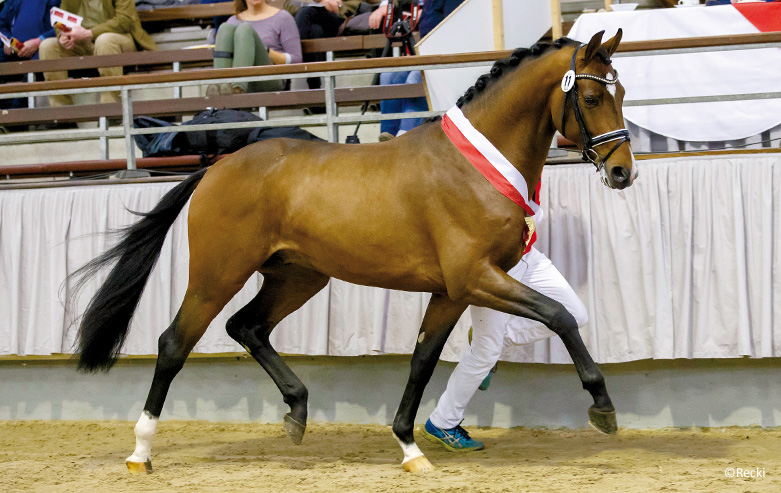
Escalito
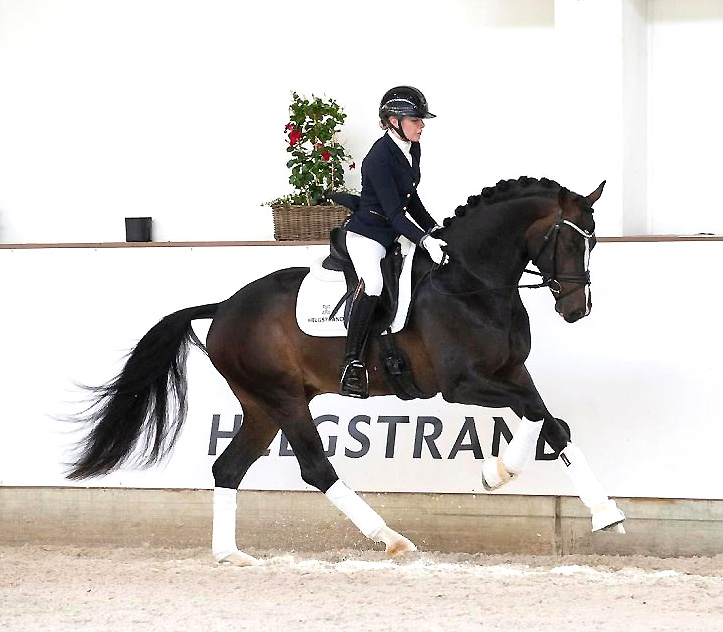
Elastic

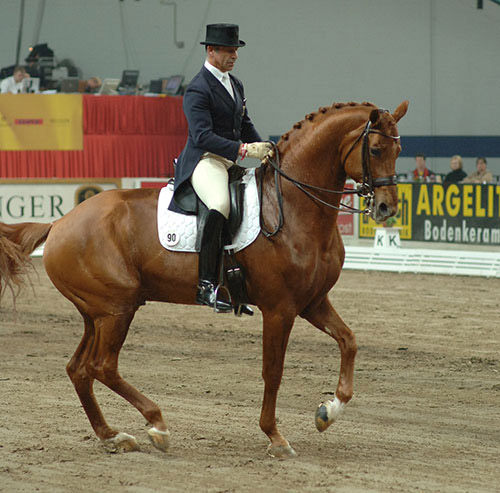
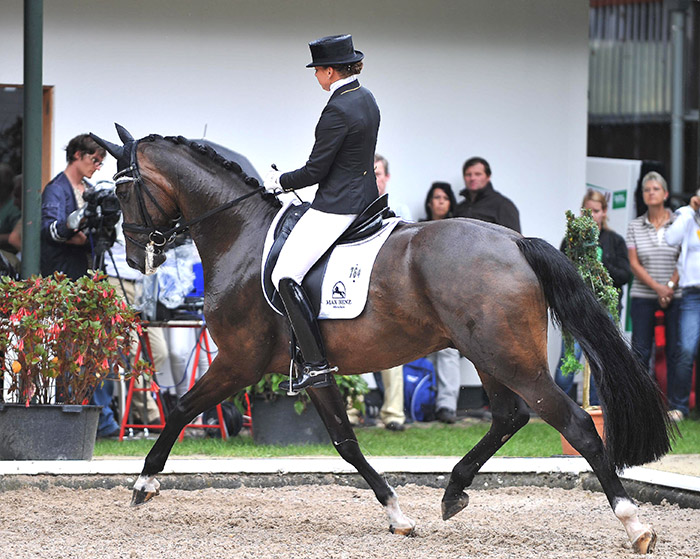
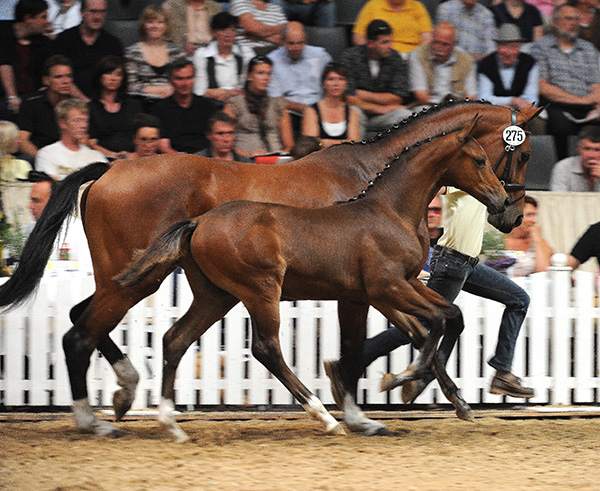
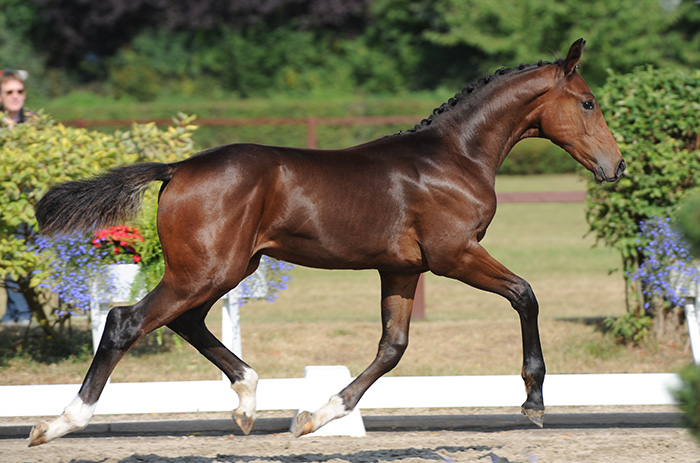
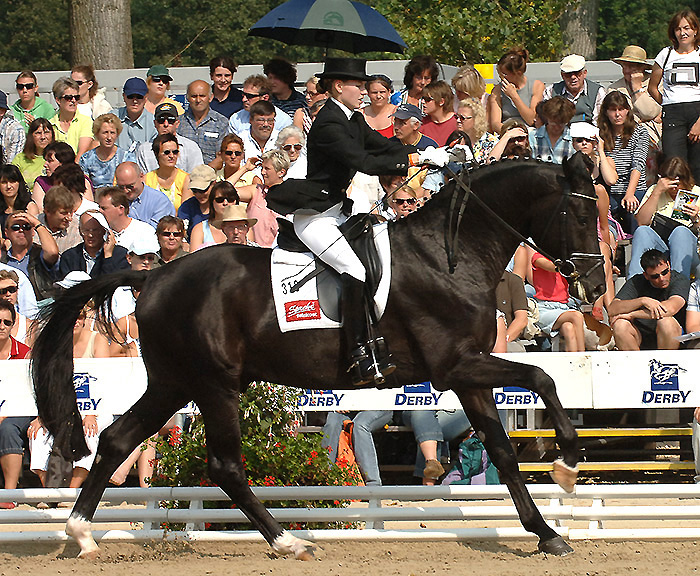
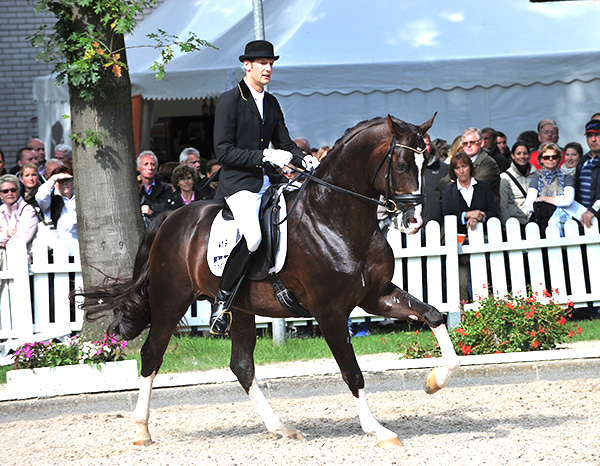
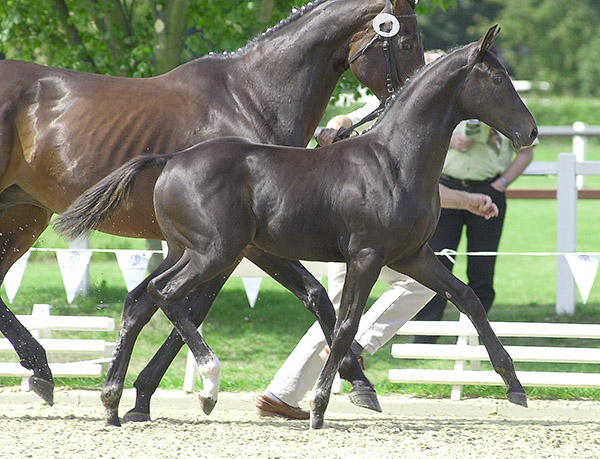
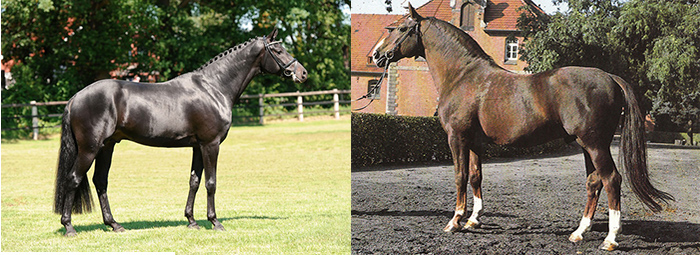
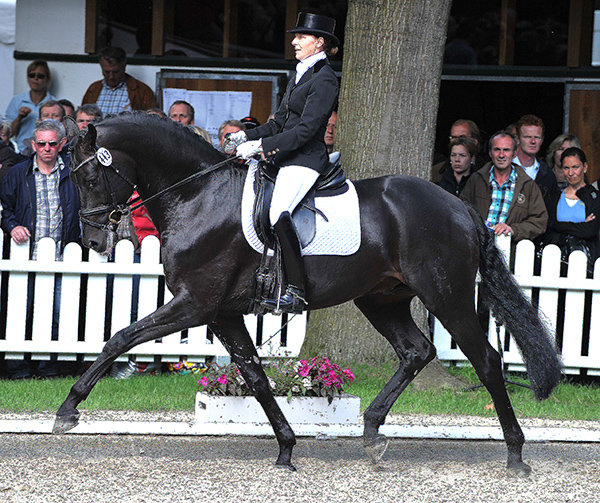
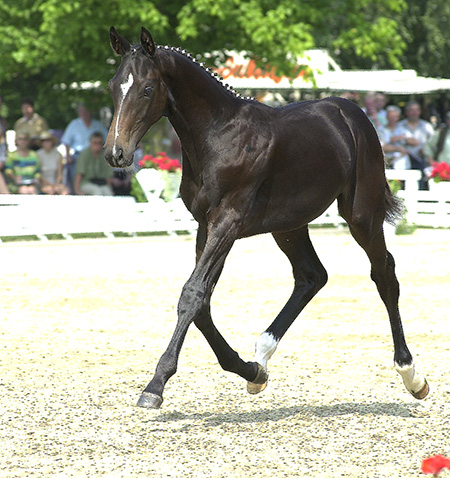
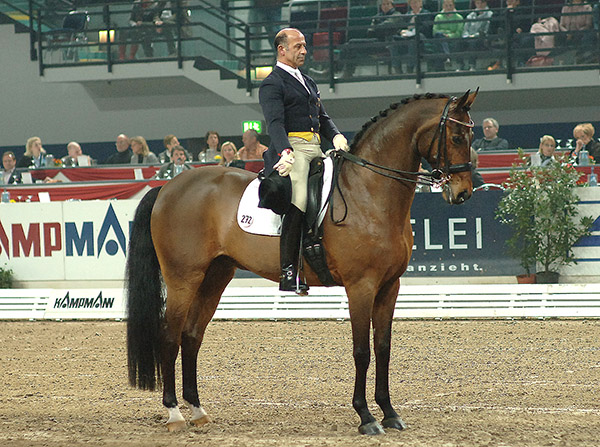
Excellent article.
Should be read and studied by all who aspire to ride and breed top Grand Prix Horses.